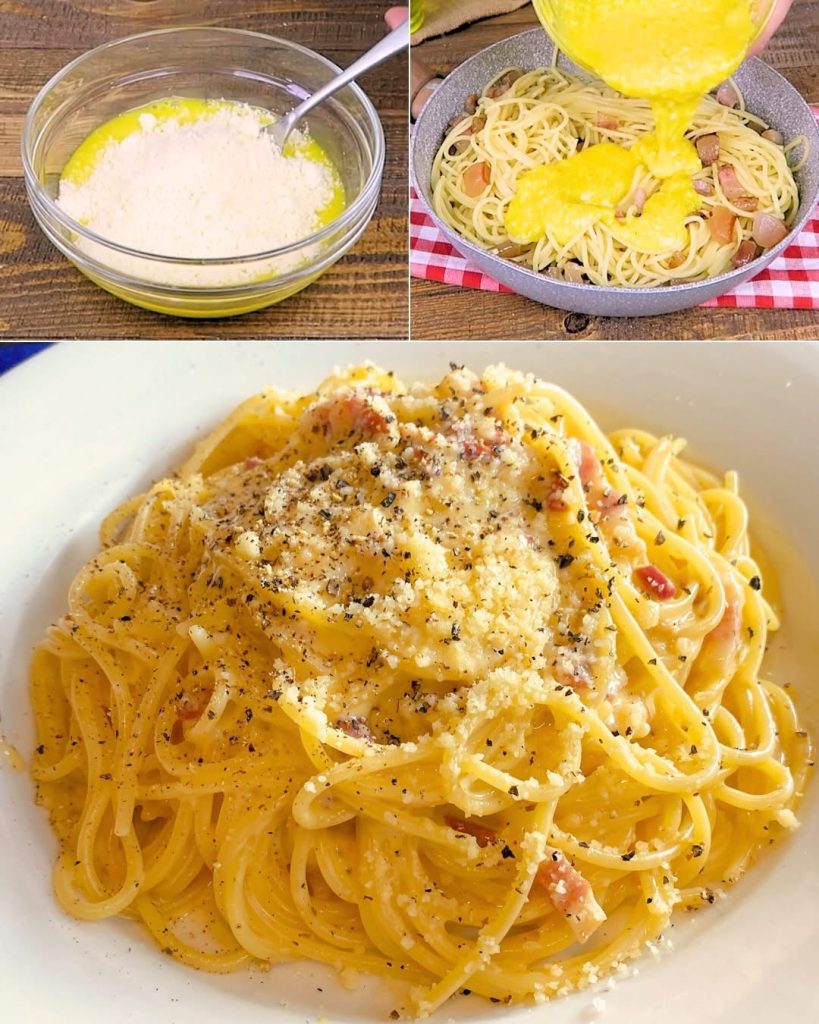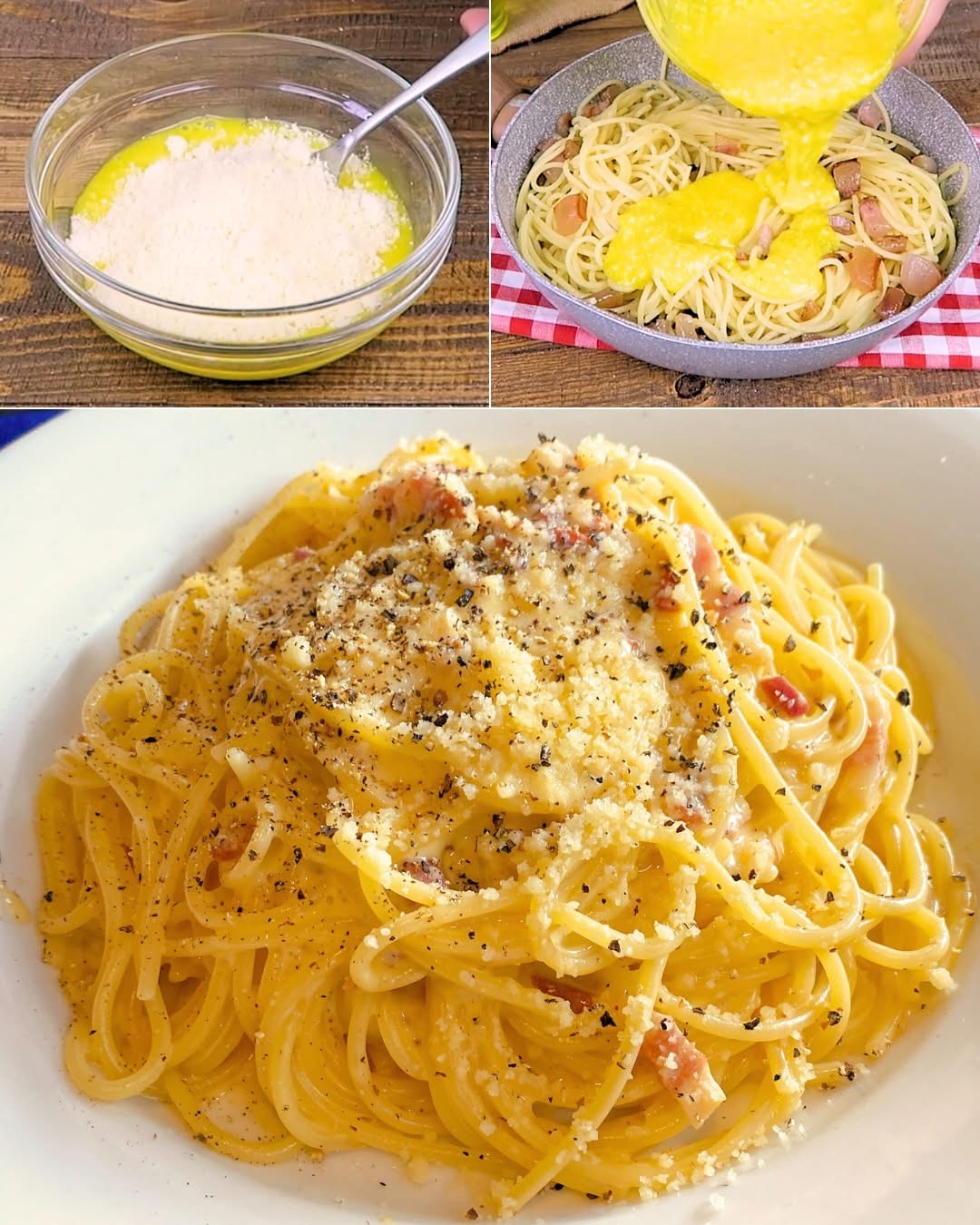
The Ultimate Spaghetti alla Carbonara
Introduction
Spaghetti alla Carbonara is the embodiment of Italian culinary philosophy: a handful of simple, high-quality ingredients transformed into something greater than the sum of its parts. With its creamy texture, savory aroma, and balanced flavors, Carbonara is a dish that has traveled from the humble kitchens of post-war Rome to the tables of fine dining restaurants around the globe.
Its magic lies in the absence of cream—despite its velvety sauce, the creaminess comes purely from the emulsion of egg yolks, cheese, and the starchy water from cooking the pasta. This silky coating embraces each strand of spaghetti like a culinary hug.
Carbonara is also a test of timing and technique. In just a few minutes, you must marry temperature control with quick movements to avoid scrambled eggs while still achieving a luscious, glossy sauce. It is a celebration of Roman tradition, resourcefulness, and flavor harmony.
Ingredients (Serves 4)
Core Ingredients
400 g spaghetti (or linguine, but spaghetti is traditional)
150 g guanciale (cured pork cheek; pancetta is a substitute)
3 large egg yolks
1 large whole egg
100 g Pecorino Romano (finely grated)
Freshly ground black pepper (generous)
Salt (only for pasta water, be careful as Pecorino is salty)
Optional Enhancements (non-traditional)
- A touch of Parmigiano Reggiano blended with Pecorino for a milder taste
- A small pinch of nutmeg for depth (experimental twist)
Step-by-Step Instructions
Step 1 – Boil the Pasta
- Fill a large pot with water and bring it to a rolling boil.
- Salt generously, remembering Pecorino will add salt later.
- Drop in spaghetti and cook until al dente (usually 1–2 minutes less than package instructions).
Step 2 – Prepare the Guanciale
- While pasta cooks, cut guanciale into thin strips or small cubes.
- Place it in a cold pan (starting cold renders fat more evenly).
- Heat over medium, stirring occasionally, until fat turns translucent and the guanciale becomes golden and crisp.
- Turn off the heat but leave the fat in the pan—this will flavor the pasta later.
Step 3 – Make the Egg-Cheese Cream
- In a large mixing bowl, whisk together egg yolks, the whole egg, and finely grated Pecorino Romano.
- Add a generous pinch of freshly cracked black pepper.
- Whisk until smooth and creamy; it should look thick but pourable.
Step 4 – Combine Pasta and Guanciale
- Once pasta is ready, reserve at least ½ cup of the starchy cooking water.
- Drain pasta and immediately transfer it to the pan with guanciale.
- Toss well so pasta is coated with the rendered fat.
Step 5 – Create the Carbonara Sauce
- Important: Remove the pan from direct heat to avoid scrambling the eggs.
- Pour the egg-cheese mixture over the pasta.
- Toss quickly and continuously, adding splashes of reserved pasta water until a glossy, creamy sauce clings to every strand.
- The residual heat from the pasta will gently cook the eggs without turning them into solid curds.
Step 6 – Serve Like a Roman
- Twist pasta into neat nests on each plate.
- Sprinkle extra Pecorino Romano on top.
- Finish with another grind of black pepper for aroma and bite.
The Method – Culinary Science
The secret lies in emulsification—a process where fat, water, and protein combine into a smooth sauce. The rendered pork fat (lipids) meets the starch from pasta water and the proteins from eggs, creating a silky coating. Temperature control is the key: above 70°C (160°F) and the eggs will curdle; below 60°C (140°F) and they will stay raw.
History of Carbonara
Carbonara’s true origin is a culinary mystery. Some popular theories include:
- Coal Miners’ Dish – The name carbonara possibly comes from carbonaro (charcoal burner), suggesting it was a hearty meal for miners in the Apennine Mountains.
- World War II Influence – After Rome’s liberation in 1944, American soldiers brought bacon and powdered eggs, which locals adapted into a pasta dish.
- Roman Culinary Evolution – It may have evolved from older dishes like cacio e ova (cheese and eggs), a staple in central Italy.
Regardless of its beginnings, it became a proud symbol of Roman cuisine.
Benefits of Eating Carbonara
- Protein-rich: Eggs and guanciale provide high-quality protein.
- Mineral boost: Pecorino Romano delivers calcium and phosphorus for bone health.
- Energy supply: Pasta offers slow-releasing carbohydrates for sustained energy.
- Mood booster: Comfort food that can trigger dopamine release for happiness.
Formation (Texture, Flavor, Aroma)
- Texture: Luxuriously creamy sauce clinging to firm pasta strands.
- Flavor: Salty tang from Pecorino, savory umami from guanciale, balanced with pepper’s spice.
- Aroma: Rich pork scent blended with nutty cheese and pepper’s fragrance.
Nutrition per Serving (Approximate)
- Calories: 520 kcal
- Protein: 20 g
- Carbohydrates: 55 g
- Fat: 22 g
- Fiber: 3 g
- Sodium: 750 mg
Conclusion
Spaghetti alla Carbonara is a love letter to Rome: a city of history, passion, and unpretentious culinary mastery. It reminds us that true flavor doesn’t require excess—it needs balance, quality, and a bit of heart.
For the Lovers
To those who twirl spaghetti with care, to those who chase the last creamy strand around the plate, to those who believe pepper and cheese belong in generous clouds—Carbonara isn’t just food; it’s a romantic ritual.
It’s Rome on a fork, and you deserve every bite.
